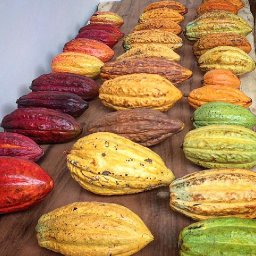Bean to bar chocolate makers

updated by @sacred-steve: 09/09/15 18:56:31
updated by @sacred-steve: 01/24/15 07:39:21

--
~~~~~~~~~~~~~~~~~~~~~~~~~~~~~~~~~~~~~~~~~~~~~~
@DiscoverChoc
 Steve
Steve
--
~~~~~~~~~~~~~~~~~~~~~~~~~~~~~~~~~~~~~~~~~~~~~~
@DiscoverChoc
 Hearts,Sacred Steve
Hearts,Sacred Steve
--
~~~~~~~~~~~~~~~~~~~~~~~~~~~~~~~~~~~~~~~~~~~~~~
@DiscoverChoc
--
~~~~~~~~~~~~~~~~~~~~~~~~~~~~~~~~~~~~~~~~~~~~~~
@DiscoverChoc
--
~~~~~~~~~~~~~~~~~~~~~~~~~~~~~~~~~~~~~~~~~~~~~~
@DiscoverChoc
updated by @clay: 09/07/15 10:40:05
--
~~~~~~~~~~~~~~~~~~~~~~~~~~~~~~~~~~~~~~~~~~~~~~
@DiscoverChoc
updated by @chocofiles: 01/24/15 14:34:43
--
~~~~~~~~~~~~~~~~~~~~~~~~~~~~~~~~~~~~~~~~~~~~~~
@DiscoverChoc
--
~~~~~~~~~~~~~~~~~~~~~~~~~~~~~~~~~~~~~~~~~~~~~~
@DiscoverChoc
--
~~~~~~~~~~~~~~~~~~~~~~~~~~~~~~~~~~~~~~~~~~~~~~
@DiscoverChoc
--
~~~~~~~~~~~~~~~~~~~~~~~~~~~~~~~~~~~~~~~~~~~~~~
@DiscoverChoc
Tags
Activity
Our first podcast episode, Chocolate is Multiple, is live. Please listen and share your feedback!
TheChocolateLife celebrates its 9th anniversary this week, starting publication the week of January 18, 2008. Already planning a 10th Anniversary bash!
Food and Wine Magazine's list of top chocolates in the US.
This appears to have been put together by a committee (there is no byline) and by people who have little or no understanding of the chocolate business. Like most lists produced this way, it's very uneven - mixing very small producers with global mass-market brands, and not differentiation between chocolate makers and confectioners.
What are your thoughts?
This year 2016 was a good year for our small business in Belgium. We now are following some new (for us) small and unique chocolate makers. Such as: Ananda (Ecuador), The Wellington chocolate Factory, Acali, Potamac, Letterpress, PumpStreet Bakery, Dick Taylor and La Naya. We are proud to be the smallest chocolate shop in Belgium following some of the best chocolate makers in the world.
Wishing you all a Merry Christmas and a happy New Year 2016/2017



